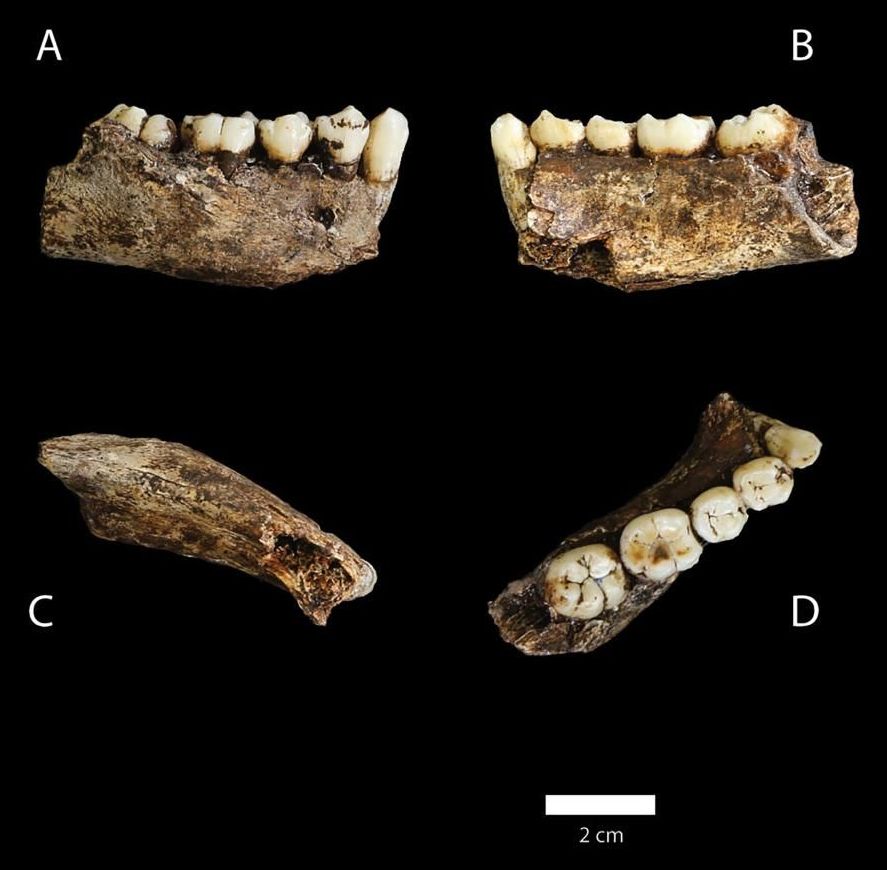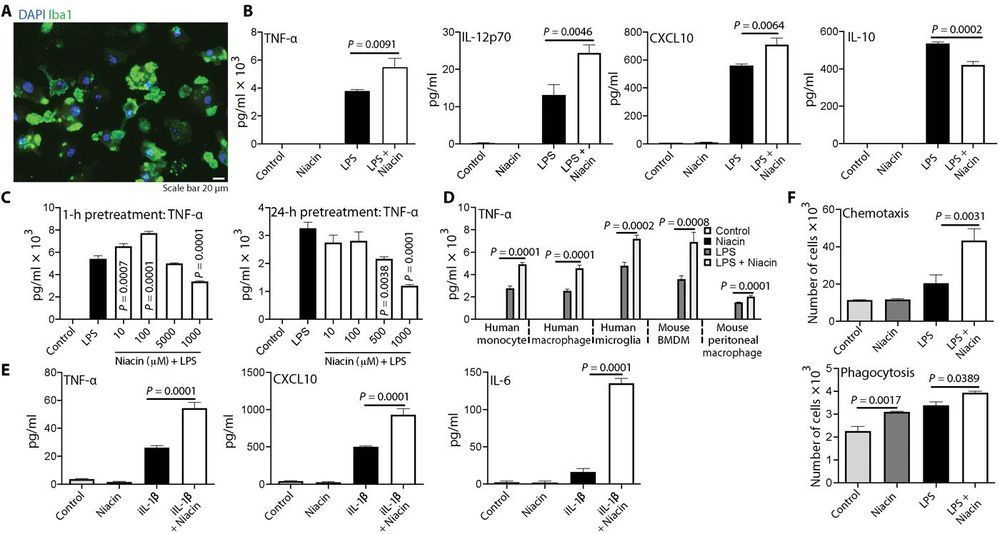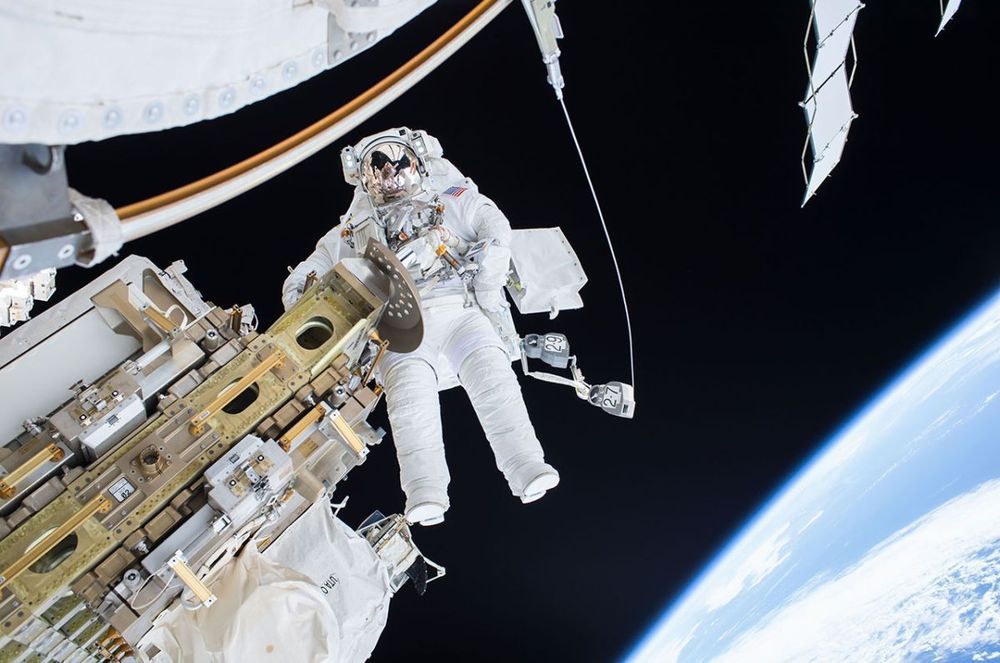The fossilized bones represent the first partial skeleton assembled for a juvenile Homo naledi.



Although innate immune cells are typically present inside tumors, they often have an inactive phenotype such that they are ineffective at killing the cancer cells or even promote tumor growth. Sarkar et al. discovered that it may be possible to reprogram these cells to a more active type using niacin (vitamin B3). The authors showed that niacin-exposed monocytes can inhibit the growth of brain tumor–initiating cells. Moreover, niacin treatment of intracranial mouse models of glioblastoma increased monocyte and macrophage infiltration into the tumors, stimulated antitumor immune responses, and extended the animals’ survival, especially when combined with the chemotherapeutic drug temozolomide.
Glioblastomas are generally incurable partly because monocytes, macrophages, and microglia in afflicted patients do not function in an antitumor capacity. Medications that reactivate these macrophages/microglia, as well as circulating monocytes that become macrophages, could thus be useful to treat glioblastoma. We have discovered that niacin (vitamin B3) is a potential stimulator of these inefficient myeloid cells. Niacin-exposed monocytes attenuated the growth of brain tumor–initiating cells (BTICs) derived from glioblastoma patients by producing anti-proliferative interferon-α14. Niacin treatment of mice bearing intracranial BTICs increased macrophage/microglia representation within the tumor, reduced tumor size, and prolonged survival. These therapeutic outcomes were negated in mice depleted of circulating monocytes or harboring interferon-α receptor–deleted BTICs. Combination treatment with temozolomide enhanced niacin-promoted survival.

The results are in and, no surprise, a lot of people want to be a NASA astronaut.
More than 12,000 people have applied to join what NASA is calling the “Artemis Generation,” a new class of astronauts to help the agency return humans to the moon and reach outward to Mars. It’s the second highest number of applications the agency’s astronaut corps has ever received, NASA officials said.

One of the most talked-about issues to come out of the coronavirus pandemic has been testing. Why is it so hard to get a COVID-19 test? How accurate are they, really? Why does it take so long to get results?

After a year of investigation the US Food and Drug Administration (FDA) has completely withdrawn all ranitidine products from the American market. Studies have revealed levels of a carcinogenic compound can increase in the product over time, particularly when stored at high temperatures.
Early last year concerns were raised after some ranitidine products were found to contain low levels of N-nitrosodimethylamine (NDMA), a known cancer-causing chemical. Frequently sold as a heartburn drug called Zantac, the FDA initially suspected the presence of NMDA was due to some kind of contamination during manufacturing.

We must remember our values and life will always hold more value than money and or corporate profits.
I have seen a number of posts and comments from Transhumanists putting economy over lives during this COVID-19 Pandemic.
This mentality is not who we are. We hold life as the highest endeavour and it is to be fought for to the bitter end. We do not bow to the Economic Elitists because the costs are too high. I am going to point out some of the finer points from Zero State, a group that existed some time ago that gave birth to a vast number of Transhumanist leaders of today.

The world is only just getting used to the power and sophistication of virtual assistants made by companies like Amazon and Google, which can decode our spoken speech with eerie precision compared to what the technology was capable of only a few short years ago.
In truth, however, a far more impressive and mind-boggling milestone may be just around the corner, making speech recognition seem almost like child’s play: artificial intelligence (AI) systems that can translate our brain activity into fully formed text, without hearing a single word uttered.
It’s not entirely science fiction. Brain-machine interfaces have evolved in leaps and bounds over recent decades, proceeding from animal models to human participants, and are, in fact, already attempting this very kind of thing.


A fundamental challenge in the creation of a “quantum internet” is how to securely transmit data between two points. But one team of U.S. scientists may have found the answer.
New research from experts at the California Institute of Technology (Caltech) suggests atoms in small boxes of light — optical cavities — could soon “form the backbone technology” of the futuristic internet that relies on the mysterious properties of quantum mechanics for ultra-fast computing.